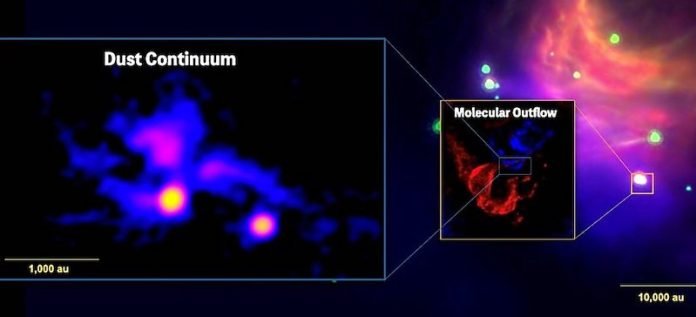
Scientists from the Shanghai Astronomical Observatory decided to look deeper into the Orion Giant Molecular Clouds. They used a big telescope named ALMA to do this.
The team, called ALMASOP, was led by Prof. Liu Tie. What they found was surprising: inside one cloud, they saw a group of four baby stars forming together. This is called a quadruple-star system.
The Special Star System
Star systems with four stars are rare. We already knew about one such system from a study in a famous journal.
But the system this team found was different. It was much closer together and showed us new things about how stars are born.
Many stars in our galaxy live with other stars. Some have just one partner, while others live in groups of three, four, or more. To understand how planets like Earth form, we need to know how these star groups come to be.
Stars are born in special parts of clouds called “dense cores”. Before this study, we didn’t know much about how groups of three or more stars form. But the ALMASOP team’s work gives us some clues.
What The Stars Tell Us
The team looked at 72 spots in the Orion Clouds. In one spot, they found the special quadruple system. This system had two baby stars and two spots that might turn into stars soon.
The distance between these four was really small, only 1,000 times the distance between Earth and our Sun. This made the scientists think that they would all stay close and become a big star family.
They also saw ribbon-like patterns in the cloud. These ribbons might be helping the baby stars grow by bringing them gas. In fact, the ribbons might even break and form new stars.
But there were also streams of gas moving away from the baby stars. This means while some gas helps the stars grow, some of it gets pushed away.
What Comes Next
Scientists still have a lot to learn. For example, they’re not sure how the gas moving away from the baby stars affects them. But one thing is clear: studying this star family gives us a new way to think about how stars are born.
In the future, the ALMA telescope might tell us even more about star families.
Every time scientists look deeper into space, they find new stories about the universe. And each story helps us understand our own place in the big picture.
The study was published in The Astrophysical Journal Letters.



